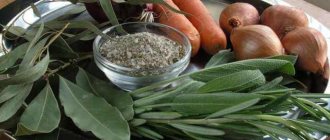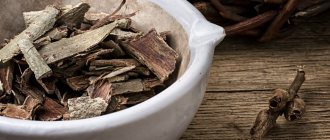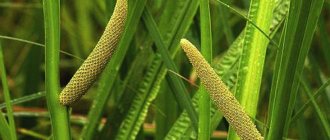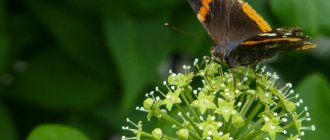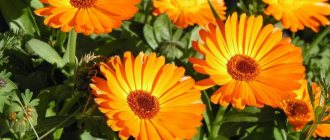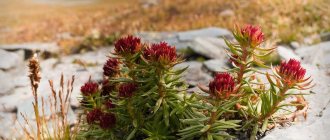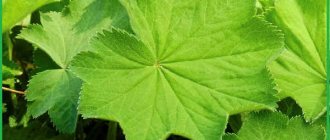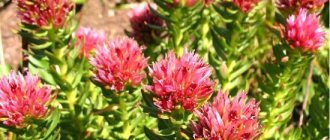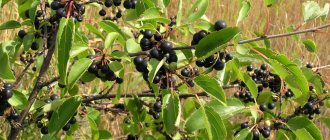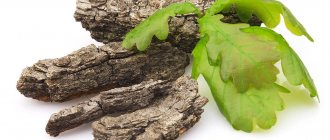Buckthorn bark: medicinal properties and contraindications
The buckthorn plant is a representative of a species of deciduous tree-like shrubs of the Buckthorn family, which includes about 40 species. Its name frangula alnus comes from the Latin word “to break”, due to the brittleness of the branches; one of the popular subspecies is “buckthorn laxative” or zhoster, which is known to many by the popular name “wolfberry”.
Small bushes with dark bark, glossy oval leaves and drupe-like (with one seed inside) black berries grow along river banks and in the copses of the middle zone, in the southern and northern latitudes of Europe, Asia and North America. The plant is considered poisonous because eating its berries causes vomiting and a laxative effect. Substances contained in the leaves and bark can cause serious poisoning.
A pomace is obtained from buckthorn seeds, which is used to produce oil used in medicine and paints and varnishes. The bark of the plant or its berries is used for medicinal purposes, and the product is used not only in alternative folk recipes, but also in the manufacture of traditional medicines (tablets, powder, bark extract are produced). The substances that make up the plant have a laxative, antibacterial effect, have a hemostatic, analgesic, and mild sedative effect.
Description of the species
Brittle buckthorn or alder buckthorn (synonyms - buckthorn, brittle buckthorn) is a deciduous bush up to 7 m high. Sometimes it looks like a tree. The Krushin family, to which this species belongs, has 55 types (they mainly grow on the American continent).
There is also an evergreen bush with thorns. The alder variety really resembles this tree: the same large branches with a gray-brown surface covered with light spots (in young shrubs it is reddish and shiny). The red layer under the outer corky shell is the defining feature of the species.
The buds of the bush are bare, without covering scales. The foliage is entire, elliptical in shape, the leaves are arranged alternately. The shrub blooms in May. Yellow-green flowers on short (up to 1 cm) pedicels are collected in racemes protruding from the leaf axils.
You can recognize the plant by the shape of the fruit: red (when green) or blue-black (when ripe) berry in the shape of a ball with a diameter of up to 10 mm. The berries ripen (with two seeds inside) in August.
Chemical composition
The beneficial properties of buckthorn used in medicine are due to the unique chemical composition of the plant. The bark of this shrub, its berries and seeds contain the following elements:
- Anthraglycosides (frangularoside). Natural chemical compounds that enhance natural intestinal motility, irritating its walls. Their presence provides the main therapeutic effect of the use of buckthorn - a laxative effect.
- Tannins. Relieves inflammatory processes, reduces secretory activity of the gastrointestinal tract. They provide protection to mucous membranes from harmful microorganisms and have the ability to remove heavy metals from the body.
- Alkaloids. They have a hemostatic effect, analgesic, and calming sedative effect. Lower blood pressure levels.
- Organic acids (succinic, ascorbic, malic acids). Natural antioxidants – activate digestion processes. removes toxins and waste.
- Gum. Suppresses appetite, lowers blood cholesterol levels.
- Pectins. They increase the intensity of peripheral blood circulation, which helps normalize digestive processes. Provides normal natural intestinal motility.
- Essential oils (higher content in berries, lower content in bark). They have a positive effect on the functionality of the nervous system and stimulate its work. They have antiseptic properties.
- Mineral composition: potassium (normalizes myocardial function, relieves edema, lowers blood pressure); calcium and magnesium (strengthening the immune system, bone tissue; normalizing nervous activity, functioning of the vascular system); manganese (normalization of lipid metabolism); iron, copper (activation of the immune system, hematopoietic system); boron (normalization of hormonal balance and reproductive function).
Pharmacological features
Wolfberries owe their amazing healing powers to their composition. In particular, anthraglycosides are aggressive towards the gastrointestinal tract: they activate peristalsis and carminative effects.
The laxative effect is also increased thanks to the aglycone franguloemodin - within 10 hours it is synthesized during the hydrolysis of anthraglycosides under the influence of bacteria and digestive enzymes, therefore, as a carminative, it works locally, in the colon.
The alkaloid identified in the bark of the buckthorn tree has antibacterial and antifungicidal properties, as well as pronounced sedative properties.
The main pharmacological effect of buckthorn bark is due to the content of anthraglycosides
Uses of buckthorn bark
The main pharmacological property of the plant bark is a laxative effect, therefore it is used to treat chronic constipation and is used as an aid in the fight against excess weight. Traditional medicine recommends the use of bark decoction for the following diseases and conditions:
- diseases of the kidneys, urinary tract (urolithiasis, colic);
- gout;
- intestinal atony;
- nervous disorders, hormonal imbalance during menopause;
- skin diseases (dermatitis, eczema, scabies);
- heart failure, other disorders of the cardiovascular system;
- diseases of the digestive system;
- hemorrhoids at any stage of development.
Treatment is carried out using different dosage forms. Infusions or decoctions, a forty-degree alcohol tincture are prepared from dried plant materials, less often it is recommended to use dried berries or powder based on them, and even less often - juice from fresh berries (due to the high risk of side effects and poisoning in case of overdose). In pharmacies you can buy tablets, bark extract, buckthorn berry syrup or powder in special filter bags for brewing.
You can prepare a medicinal product based on herbal raw materials (prepared yourself or purchased) at home, according to one of the following recipes:
- Infusion of dried berries. Pour 10 g of dried berries with a glass of boiling water and leave for 8 hours. To prepare the syrup, the finished infusion is mixed with sugar in equal parts.
- Bark decoction. Pour 20 g of crushed dried plant material into 450 ml of cold water, simmer over low heat for 25-30 minutes.
- Infusion from the bark. Pour 20 g of bark into two glasses of cold water, leave at room temperature for 10-12 hours.
- Alcohol tincture from bark or berries. Dried and thoroughly crushed plant materials are poured with purified medical alcohol, proportion 1:1.
For fever
During febrile syndrome, traditional healers recommend taking a decoction of the plant bark twice a day, 120 ml, regardless of the time of meal. Treatment is continued until symptoms disappear (chills, high fever, aching bones) and for three days after recovery. Children under 12 years of age, pregnant women and during lactation are not recommended to use this product. Side effects may occur - nausea and diarrhea.
For constipation
For chronic constipation and the development of accompanying hemorrhoids, doctors recommend the bark of the plant as an adjunct to treatment and prevention. Buckthorn for constipation is taken in the form of a decoction prepared from plant materials or based on powder purchased at a pharmacy in filter bags. The daily dosage is 220 ml, divided into morning and evening doses. The duration of treatment is 15-20 days, depending on the indications and medical recommendations.
For the treatment of diseases of the liver and biliary system
For diseases of the liver and urinary system, brittle buckthorn is brewed as part of medicinal preparations. Use the following recipe for preparing an infusion: combine 1 part lemon balm, 2 parts each buckthorn bark, peppermint, immortelle flower, 5 parts celandine herb, 6 parts rose hips. Pour one teaspoon of the mixture into 300 ml of boiling water, leave for 15 minutes. The daily dose is 220 ml, taken at a time, with honey. The duration of treatment varies from 7-10 days, adjusted depending on the patient’s condition.
If you are overweight
A decoction of buckthorn bark is taken during a diet to maintain normal intestinal motility. The use of this product activates metabolic processes, normalizes lipid metabolism, which promotes smooth natural weight loss. Before starting the course, you must consult with a nutritionist to develop a regimen and daily dosage. During the diet period, it is important to adhere to the principles of proper nutrition and an active healthy lifestyle. For weight loss, the plant is good to take as part of herbal preparations, for example:
- yarrow herb – 75 g;
- nettle – 100 g;
- buckthorn – 100 g;
- flaxseed – 50 g;
- elecampane - 50 g.
A tablespoon of the mixture is brewed with 400 ml of boiling water and left in a thermos for 6-8 hours. The resulting infusion is taken three times a day, before main meals, 3 tablespoons. It should be used with caution for diseases of the gastrointestinal tract, functional disorders of the liver and kidneys. After taking, there may be a slight feeling of bitterness in the mouth.
- How to find out a mobile operator by phone number
- Turkey fillet in the oven - preparing delicious dishes. Baked turkey fillet recipes with photos
- Anaprilin - what helps
For stomach pain
For stomach diseases (gastritis, ulcers and others), buckthorn decoction should be taken with caution, only with the permission of the attending physician and strictly following the prescribed regimen and dosage. Depending on the diagnosis, the daily dosage varies from 15 to 50 ml per day, taken before meals. The duration of treatment is from 10 to 16 days. While taking it, side effects may occur in the form of flatulence, abdominal pain; In this case, the daily dosage must be reduced.
For scabies
An antiseptic with a disinfectant effect, an infusion of buckthorn bark relieves itching and other unpleasant sensations in skin diseases of various etiologies. Brew the decoction according to the usual scheme; apply externally. Treat affected, pre-cleansed skin areas three times a day. The duration of the course is from 14 days or more, depending on the severity of the development of the pathological process.
Recipes based on buckthorn
Herbalists use various medicinal forms of the plant: bark decoction, extracts (liquid and dry). It is also used in complex treatment. It complements the formulation of dietary supplements.
The bark is included in tea recipes for stomach pain, constipation and hemorrhoids, and the roots are used as choleretic teas and diuretics. Buckthorn berries have anthelmintic properties and are useful for liver pathologies. Bark syrup is used in children's practice.
Bark decoction
The proportions of ingredients are standard: 1 table. l bark for 1 cup. water. Steam for 20 minutes. After straining, add water (boiled) to the initial level. Drink ½ cup of medicine. 2 rubles/day. Distribute the intake evenly, for example, at 8 a.m. and at 8 p.m. Usually the medicine manifests itself no earlier than after 8 hours, but to be on the safe side, it is better not to move away from the toilet.
The same composition is prescribed for fever and liver failure (for internal use). Used externally for scabies in children (just wash the whole body). In such cases, veterinarians also use the product.
All medicines are made from dried raw materials. If you have to use fresh, heat it at 100°C for about an hour.
Alcohol tincture
Prepare the ingredients: 1 part crushed bark and 5 parts edible alcohol (30%) or vodka. You need to insist for 10 days. The contents must be stirred periodically. This remedy is used for dermatological problems: furunculosis, pyoderma, streptoderma, and other damage to the dermis characterized by mixed microflora such as staphylococcus or E. coli.
In complex treatment, the bark is prescribed for gastrointestinal ulcers with high acidity, inflammation of the liver and gall bladder.
Positive dynamics are observed in the treatment of malaria, menopause, tachycardia, coordination disorders, central nervous system pathologies, diabetes mellitus, excess weight, and dermatological problems caused by metabolic disorders using medications based on cucumber.
The fruits of wolfberry are indicated for changes in the rhythm of bowel movements, anemia, dropsy, and heavy discharge during menstruation. It is better to take berries that are 2-3 years old to avoid stomach irritation. Use the product in powder form in minimal doses.
Buckthorn cocktail with prunes and rosehip syrup
According to reviews on thematic forums, this cocktail is one of the most popular for cleansing the intestines of everything unnecessary.
You will need a bag of buckthorn bark, prunes with pits (400 g) and holosas. Dried fruits should be boiled for 40 minutes in 1.5 liters of water. Remove the plums and add 15 g of buckthorn bark to the compote. Boil the broth and leave in a warm place for 5 hours, wrapped in a warm towel.
After straining, add up to 1.2 liters of water to the resulting broth. Now you can add holosas and mix thoroughly. The laxative should be stored in the refrigerator. You can drink 100 ml at night (2 hours after dinner), preferably warm. The course of treatment is 12 days. If necessary, you can repeat after 21 days.
Instructions for use of buckthorn bark
The official medical instructions for the use of buckthorn bark prescribe the use of tablets, infusion or extract as a laxative for constipation, as well as for menopausal disorders to normalize metabolic processes. Forms of release of the drug - tablets for oral administration, powder for preparing an infusion, alcohol extract, syrup. The dosage regimen and dosage are selected individually by the attending physician in accordance with the indications and symptoms.
Pills
Prescribed for oral administration, 1-2 pieces per dose. It is recommended to take the product in the evenings, no later than 2 hours before bedtime; the laxative effect is observed 8-10 hours after consumption. The duration of the course of treatment is from one to three weeks, depending on the diagnosis and the general health of the patient. The drug is not prescribed to women during pregnancy and children under 12 years of age.
Extract
This form of release is prescribed for oral administration (for constipation, liver disease, disorders during menopause). The dosage is 20-40 drops in the evening, the duration of use is 10-15 days. For external use during skin diseases, the product is diluted with water in a 1:1 ratio and applied to the affected and adjacent areas of the skin three times a day, for 14-20 days.
special instructions
Regular use of this drug can be addictive, as a result of which the laxative effect is greatly reduced or disappears completely. The use of a decoction as a means of treating and preventing constipation should be alternated with other methods and medications. When independently procuring raw materials, you must remember that in the first year after collection, the bark and berries are toxic and can cause damage to the mucous membranes of the stomach. To prepare a decoction or infusion, use collections made 12 or more months ago.
Contraindications
Preparations based on buckthorn bark are not prescribed during pregnancy and lactation, or for children under 12 years of age. Taking the drug is contraindicated for the following diseases and conditions:
- intestinal obstruction;
- colitis;
- appendicitis;
- constipation of endocrine and neurogenic origin;
- metrorrhagia;
- carbunculosis;
- individual hypersensitivity to the product.
Side effects
Due to its wide spectrum of action and rich composition, you can get not only the desired effect from buckthorn bark, but also side effects.
The most common are allergic reactions, abdominal pain (especially with an overdose), and a feeling of discomfort.
The main side effect is addiction – with regular and long-term use.
To avoid this, it is recommended to alternate taking buckthorn bark with other laxatives.
A side effect can also be a change in the color of urine when taking buckthorn preparations due to the content of chrysophanic acid. However, this does not require treatment adjustments.
Long-term use of buckthorn preparations also entails disruption of water-salt metabolism and depletion of the body in important minerals.
Contraindications
- increased individual sensitivity to components;
- constipation caused by endocrine disorders;
- intestinal obstruction;
- bleeding;
- inflammation of appendicitis;
- any inflammatory processes in the abdominal cavity;
- acute febrile conditions;
- tumors;
- pregnancy and lactation period.
Unripe buckthorn fruits cannot be used!
Buckthorn is contraindicated during pregnancy. Taking buckthorn preparations causes a rush of blood to the pelvic organs, which can result in a miscarriage.
Price of buckthorn bark
All forms of the drug can be purchased in pharmacies or on appropriate online resources without a doctor's prescription. The price range for buckthorn bark of all forms in Moscow pharmacies is presented below:
| Release form | Price, in rubles |
| packaging 50 g | 65-80 |
| packaging 100 g | 70-98 |
| filter bags 2 g No. 20 | 55-96 |
| buckthorn syrup, 12 mg | 129-175 |
| buckthorn extract | 138-212 |
| buckthorn bark tablets No. 30 | 185-220 |
